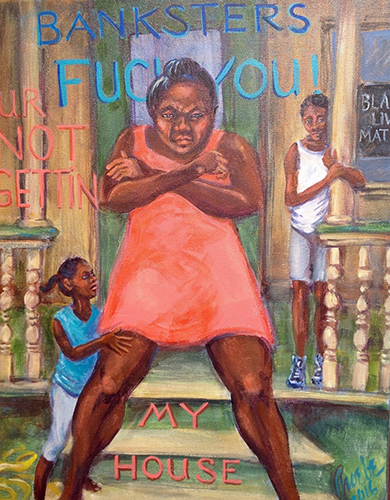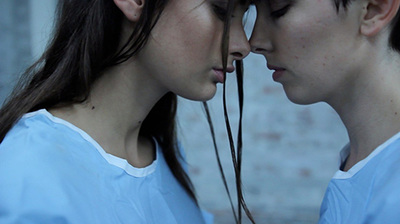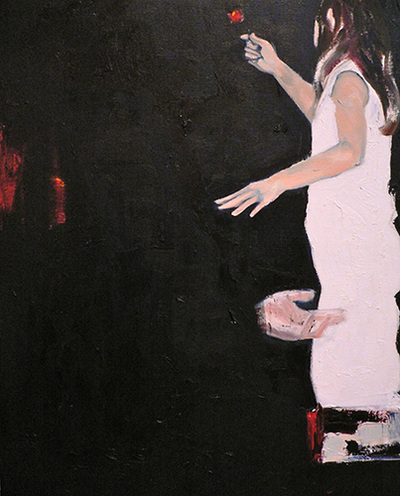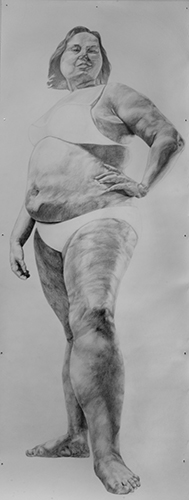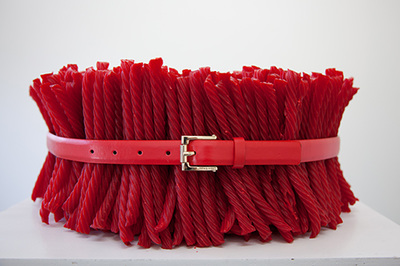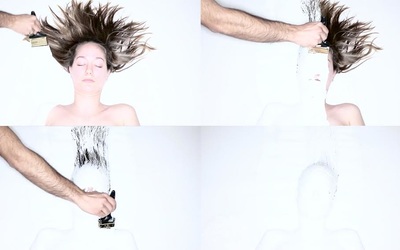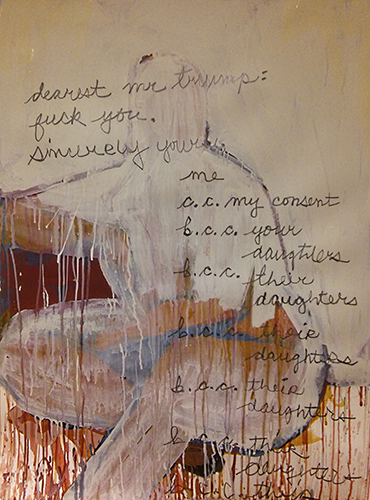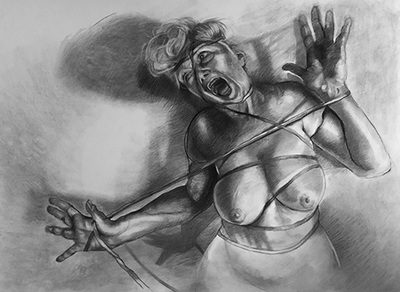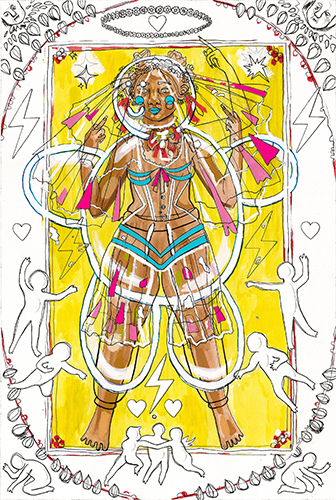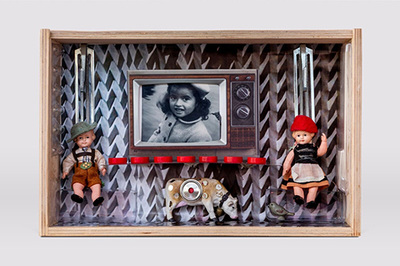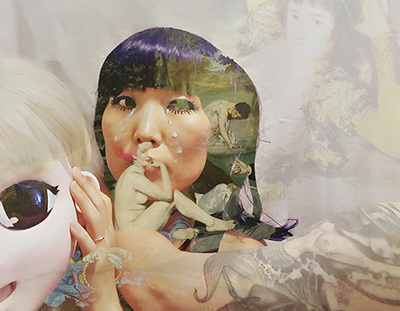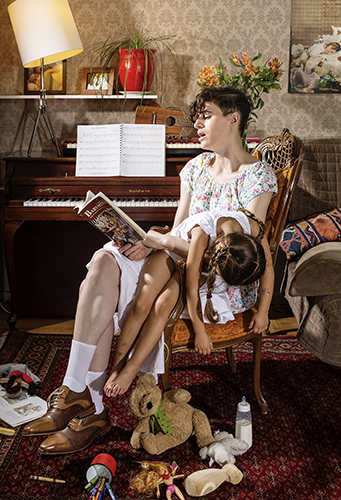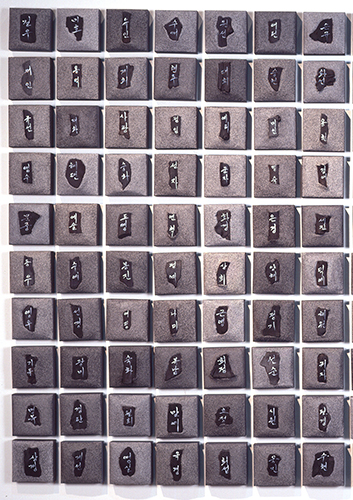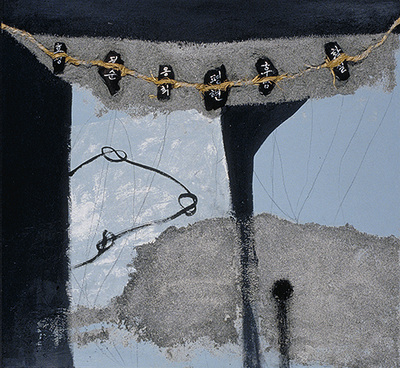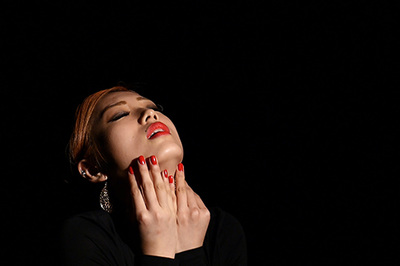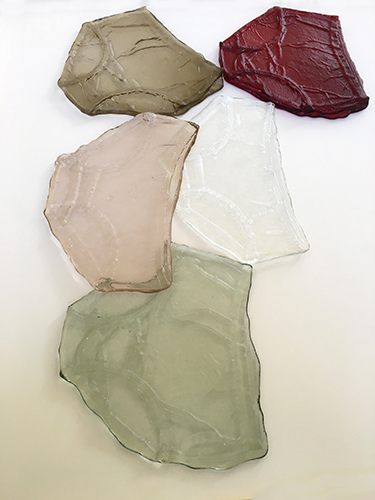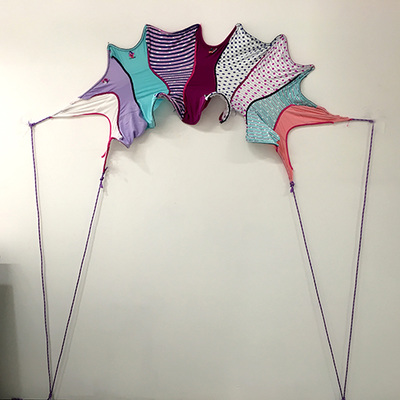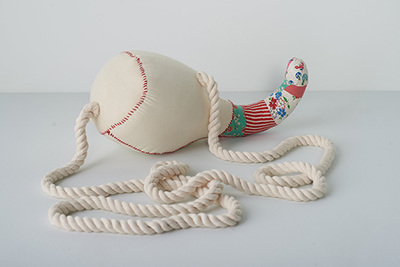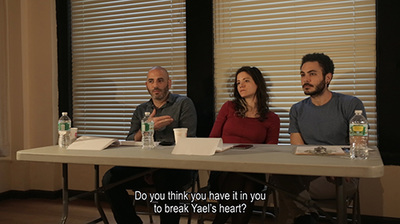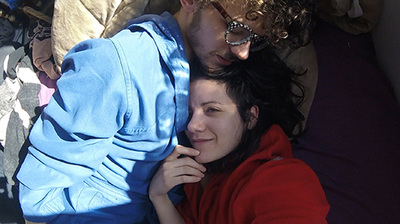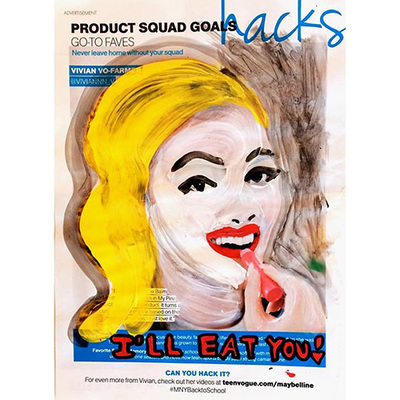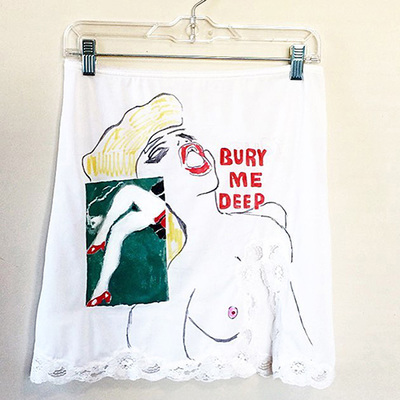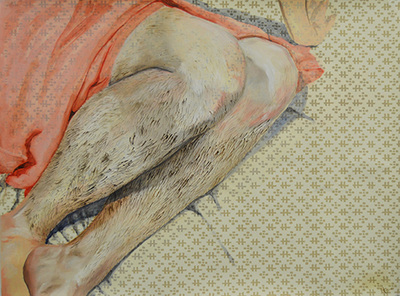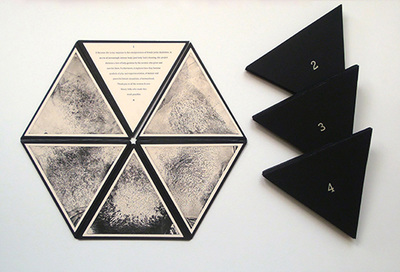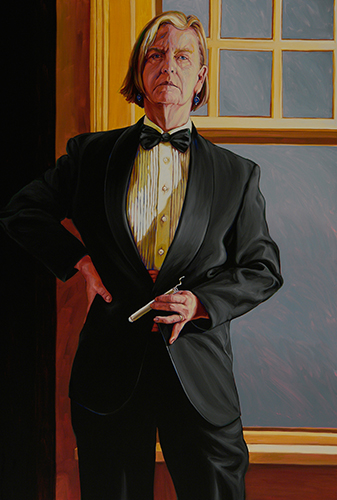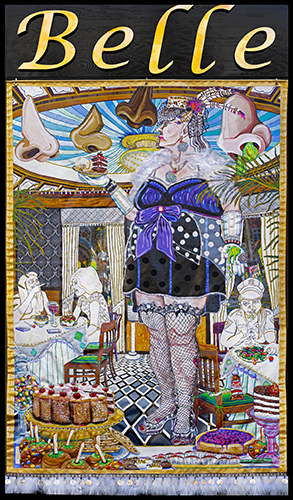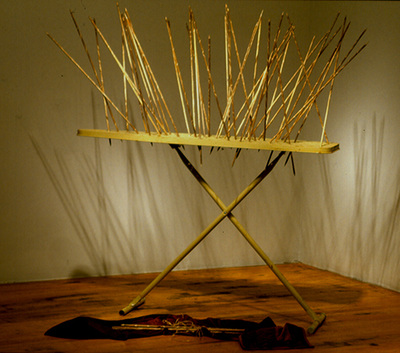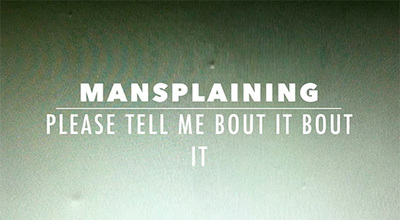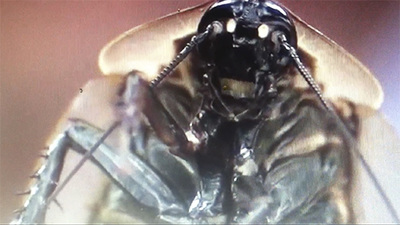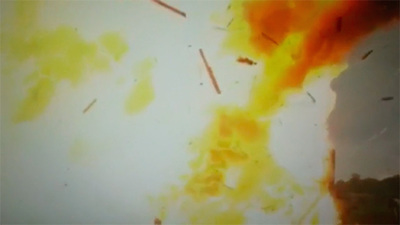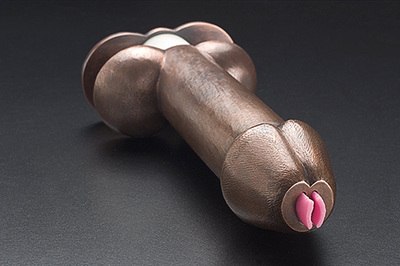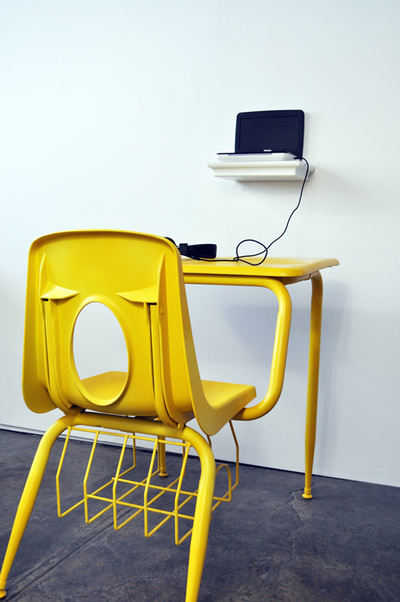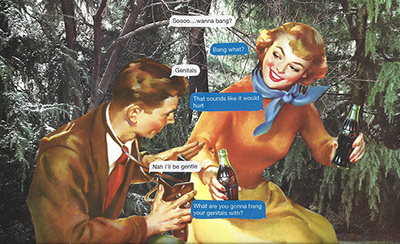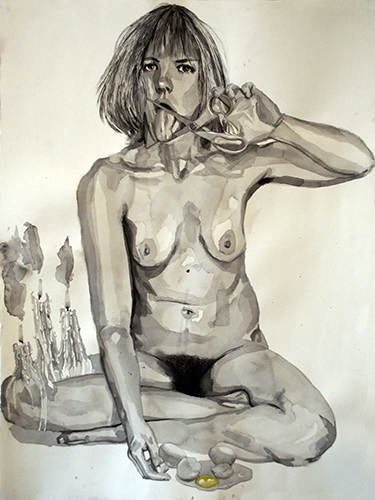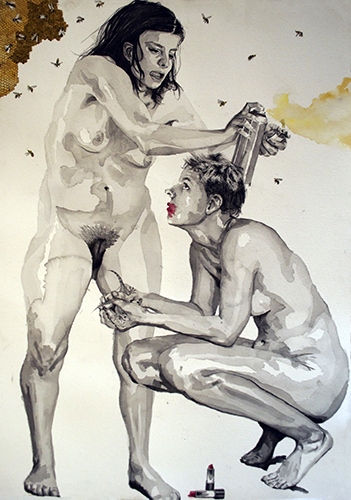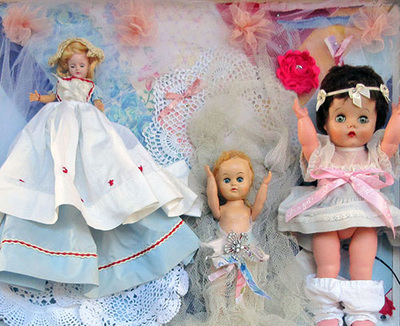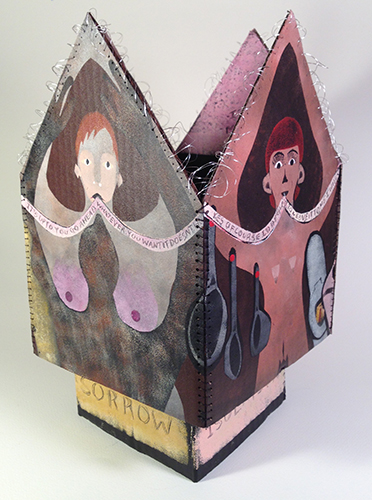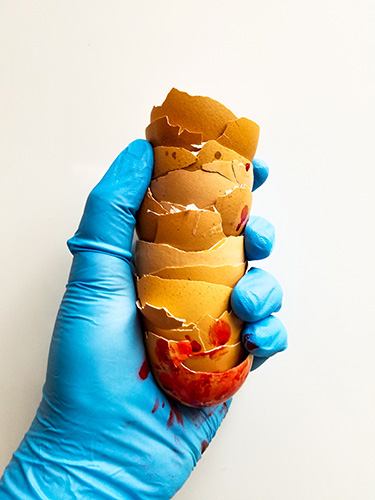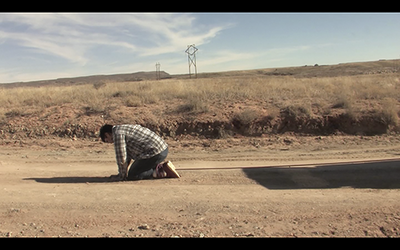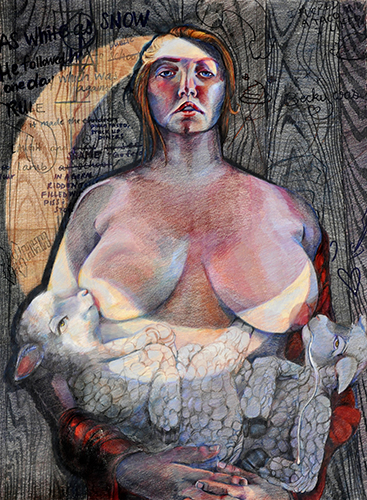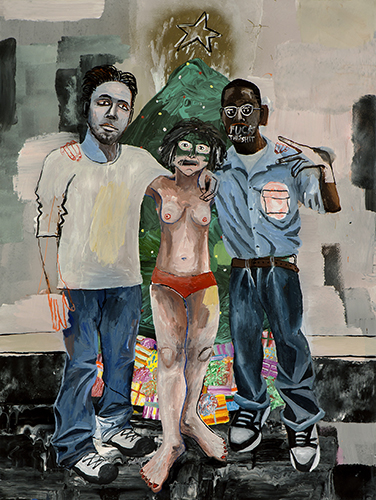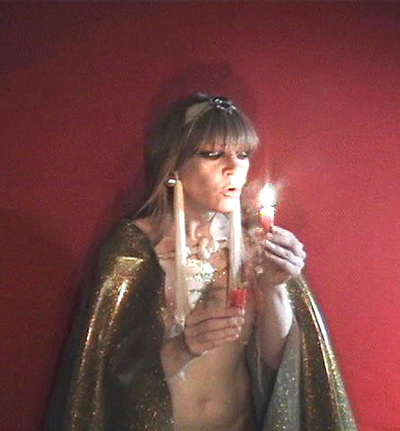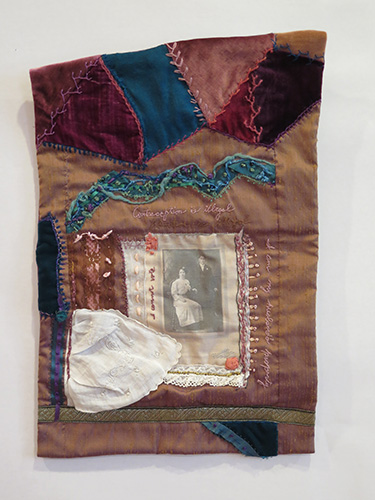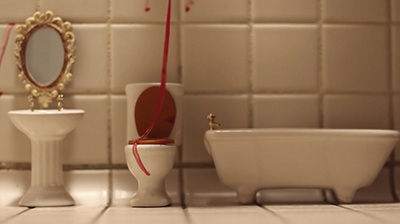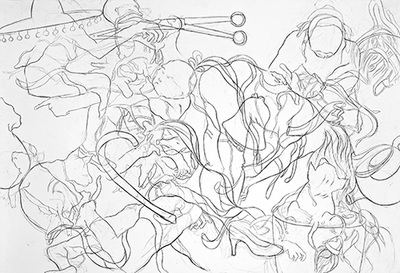NATIONAL ARTISTS SELECTED BY SHANNON ROSE RILEY, M.F.A., P.H.D.
ASSOCIATE PROFESSOR & CHAIR OF HUMANITIES, SAN JOSÉ STATE UNIVERSITY
Phoebe Ackley, Susan Ahlfs, MGP Andersen, Yael Azoulay, Pamela Belknap, Tracy Brown, SAMANIA (Samira Mahboub and Ania Catherine), Sara Cole, Madelyn Covey, Grace Fechner, Dwora Fried, Amy Finkbeiner, Laura Gelsomini with Susan Duby, Brandon Harrell, Samantha Hofsiss, Blond Jenny, Kay Kang, Daniela Kostova, Kellie Ann Krouse, Liz Leger, Chanel Matsunami Govreau and Lip J, Colleen Merrill, Rachel O’Donnell, Patricia Olson, Jessi Presley-Grusin, Nancy Roy-Meyer, Zona Sage, Lucy Sexton, Judy Shintani, Dafna Steinberg, Rebecca Sutton, Rhonda Thomas Urdang, Wendy Tigchelaar, Marcela Torres, Teddi Tostanoski, Cate White, Leisel Whitlock, Joni Wildman.
SHANNON ROSE RILEY, M.F.A., P.H.D. JUROR STATEMENT
It has been a great pleasure to jury “F*ck U! In the Most Loving Way”—I am grateful to NCWCA for the invitation and to all of the artists who submitted works in response to the call. All told, we received over 300 submissions in a variety of media—and I had the rather daunting task of selecting no more than 15% for exhibition. Many excellent pieces were not included, so let me say a bit about my process and the criteria I kept in mind when making selections.
My first consideration was the strength of the image or the work’s formal power: I responded almost viscerally to the images that grabbed me in some way—sometimes the pull was immediate and at other times it built more quietly and persistently. Next, I considered the exhibition theme and how the work responded to it. I kept in mind that the show intends to serve as “a platform for women to air their grievances” and as such, I did not turn away from uncomfortable content. I especially looked for works that are in some dialogue with feminist art of the 1970s—Womanhouse in particular—as well as for works that speak to our own historical moment. My final consideration was the artist’s written statement. While I juried the show, the Trump “pussy-grabbing” scandal unfolded, as did his “nasty woman” comment. In the days that followed, “Nasty Woman” was seized as a kind of rallying cry for yet another feminist stance—and Pussy Riot released their video, “Straight outta Vagina.” The timing is indeed perfect for the theme of this exhibition.
Many of the works confront stereotypical gender roles and challenge just who or what constitutes a “woman” today. Many deal with the subject matter of abuse: sexual, physical, emotional, domestic, financial and racial violence; the constant barrage of micro-aggressions; and outright discrimination. There are incredibly brave enactments of the kinds of horror and violence that women, trans, and genderqueer people as well as people of color experience—these works are not always easy but demand that we bear witness. Others articulate radical self-care, self-respect, and other savvy strategies for survival. And of course, there is still a good amount of humor in the works. Like much feminist art of the 1970s, many of these works are concerned with woman’s labor—whether creative, productive, domestic, or reproductive—as well as with issues of violence and sexuality. There are material explorations in textile, self-portraiture, and installation that also harken back to Womanhouse strategies. One thing becomes clear when looking at the works and reading the statements: and that is that the personal is still political.
Shannon Rose Riley, juror
November 2, 2016
My first consideration was the strength of the image or the work’s formal power: I responded almost viscerally to the images that grabbed me in some way—sometimes the pull was immediate and at other times it built more quietly and persistently. Next, I considered the exhibition theme and how the work responded to it. I kept in mind that the show intends to serve as “a platform for women to air their grievances” and as such, I did not turn away from uncomfortable content. I especially looked for works that are in some dialogue with feminist art of the 1970s—Womanhouse in particular—as well as for works that speak to our own historical moment. My final consideration was the artist’s written statement. While I juried the show, the Trump “pussy-grabbing” scandal unfolded, as did his “nasty woman” comment. In the days that followed, “Nasty Woman” was seized as a kind of rallying cry for yet another feminist stance—and Pussy Riot released their video, “Straight outta Vagina.” The timing is indeed perfect for the theme of this exhibition.
Many of the works confront stereotypical gender roles and challenge just who or what constitutes a “woman” today. Many deal with the subject matter of abuse: sexual, physical, emotional, domestic, financial and racial violence; the constant barrage of micro-aggressions; and outright discrimination. There are incredibly brave enactments of the kinds of horror and violence that women, trans, and genderqueer people as well as people of color experience—these works are not always easy but demand that we bear witness. Others articulate radical self-care, self-respect, and other savvy strategies for survival. And of course, there is still a good amount of humor in the works. Like much feminist art of the 1970s, many of these works are concerned with woman’s labor—whether creative, productive, domestic, or reproductive—as well as with issues of violence and sexuality. There are material explorations in textile, self-portraiture, and installation that also harken back to Womanhouse strategies. One thing becomes clear when looking at the works and reading the statements: and that is that the personal is still political.
Shannon Rose Riley, juror
November 2, 2016
ONLINE GALLERY
Click on a box to see full image, artist's name and title of work. For artist statements, click here.
